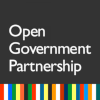Promoting Employment Opportunities for Women and Youth in the Tangier-Tetouan-Al Hoceima Region (MATTH0015)
Overview
At-a-Glance
Action Plan: Not Attached
Inception Report: Not available
Commitment Start: May 2025
Commitment End: Dec 2026
Institutions involved:
- Regional Council of Tangier-Tetouan-Al Hoceima
- NorDev
Primary Policy Area:
Primary Sector:
OGP Value:
- Technology and Innovation for Transparency and Accountability
Description
Commitment ID
MATTH0015
Commitment Title
Promoting Employment Opportunities for Women and Youth in the Tangier-Tetouan-Al Hoceima Region
Problem
The Regional Council's commitment to supporting the employment of women and youth is essential for sustainable development and good governance in the region. This commitment addresses several major socio-economic challenges that hinder the equitable integration of women and youth into the labor market:
The effective and sustainable integration of women and youth into the labor market still faces significant obstacles. These groups encounter structural barriers that limit their access to employment, including persistent discrimination, lack of suitable opportunities, and difficulties accessing financial resources and vocational training.
There is a significant gap between the skills possessed by youth and women and those demanded by the labor market. This mismatch between the supply and demand of skills contributes to high unemployment among these populations and hinders the economic development of the region.
Employment support programs do not sufficiently take into account the diversity of profiles and specific needs of women and youth. This uniform approach fails to effectively address the particular challenges faced by different groups, including rural women, vulnerable youth, or people with disabilities.
Current vocational training programs are not sufficiently aligned with the requirements of the modern labor market, thus limiting the employment prospects of beneficiaries. This situation is particularly concerning in emerging and high-value-added sectors.
Status quo
Currently, the Tangier-Tetouan-Al Hoceima region has a particularly high unemployment rate among youth and women, despite its considerable economic potential. Existing initiatives to promote employment for these groups are fragmented and lack coordination, which limits their overall impact.
Women, especially in rural areas, face additional obstacles to accessing the labor market, including sociocultural constraints, limited access to resources and services, and restricted mobility.
Young graduates struggle to find jobs matching their qualifications, leading to talent emigration and increased risks related to precariousness and social exclusion.
Initiatives have been launched to support female and youth entrepreneurship, but access to financing remains a major challenge for these entrepreneurs. Existing financing mechanisms are not sufficiently adapted to their specific needs.
Action
Capacity building: Develop training programs tailored to the specific needs of women and young entrepreneurs, providing technical, managerial, and financial skills to create sustainable businesses.
Preferential fund access criteria: Develop specific criteria facilitating access for women and young entrepreneurs to the NORDEV Development Fund and Tourism Investment Fund.
Cooperative support: Provide technical, financial, and commercial support to approximately 200 cooperatives, with particular attention to those led by women or youth.
"Emerging Regions" program: Complete the implementation of this strategic program aimed at reducing territorial disparities and creating employment opportunities in less developed areas.
Inclusive training: Integrate "disability professions" into courses offered by the City of Trades and Skills.
Women in fishing: Facilitate women's access to maritime fishing professions by supporting 150 traditional fishing professionals.
Rural employment creation: Establish five winter and tourist resorts in rural areas to create jobs for vulnerable women and youth while enhancing local heritage.
Youth services improvement: Strengthen career guidance, entrepreneurship support, and digital technology access services.
How will the commitment contribute to solving the public problem described above?
This commitment to support women and youth employment within the Open Government Partnership will help to:
Facilitate labor market access: By creating adapted entry points and eliminating structural obstacles, the commitment enables easier access to decent, sustainable jobs for young people and women. Preferential fund access criteria and cooperative support reduce financial barriers limiting economic participation.
Reduce unemployment: Coordinated implementation of planned actions will significantly decrease unemployment rates among women and youth. Targeted initiatives like rural tourist resorts and integrating women in fishing professions create direct jobs in high-potential sectors.
Promote social cohesion: Inclusive employment opportunities strengthen social and economic integration of marginalized groups, reducing exclusion risks. Including "disability professions" in training programs contributes to integrating people with disabilities.
Bridge skills gaps: Aligning vocational training with modern labor market needs ensures women and youth acquire relevant, sought-after skills. Strengthening entrepreneurial capacities improves abilities to create viable businesses.
Improve information access: Information platforms help women and youth identify available employment opportunities while facilitating access to training programs, financing mechanisms, and support services.
What long-term goal as identified in your Open Government Strategy does this commitment relate to?
This commitment is part of the long-term goal of creating an inclusive and sustainable economy that offers equitable opportunities to all citizens, regardless of their gender, age, or socio-economic situation.
Primary Policy Area
Inclusion, Safety Nets & Economic Inclusion
Primary Sector
Education, Private Sector
What OGP value is this commitment relevant to?
| Technology and Innovation for Transparency and Accountability | Transparency: It aims to improve access to information on job opportunities and training programs, while ensuring that the criteria for development fund allocation are clearly defined and publicly communicated to guarantee fair and transparent resource distribution. Technology and Innovation: The initiative plans to harness digital tools and innovative solutions to enhance service delivery and citizen engagement in governance processes. |
